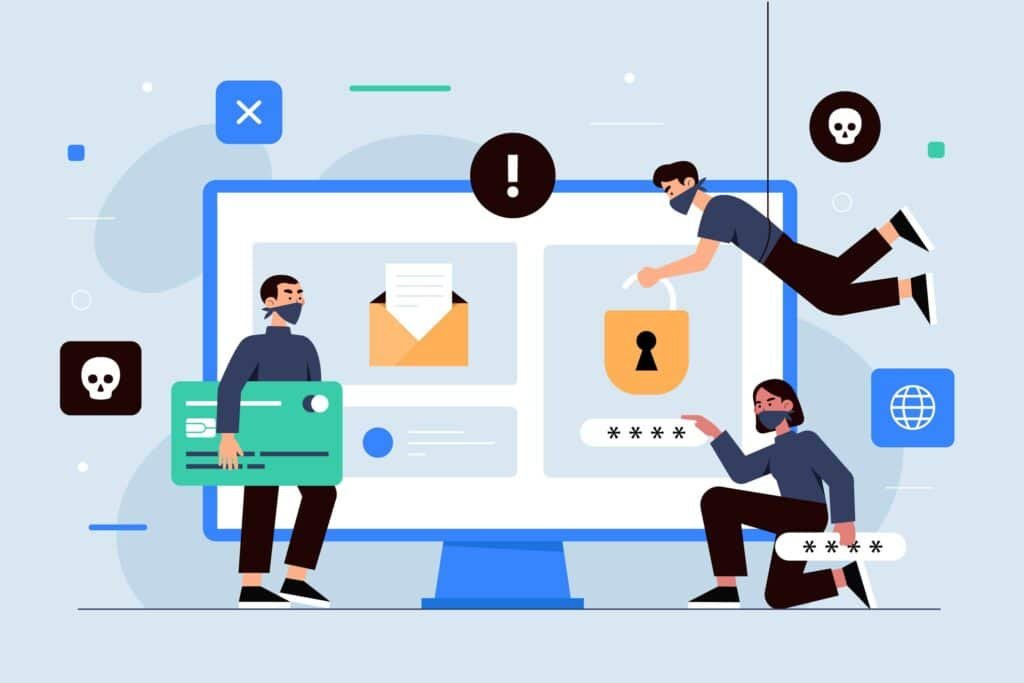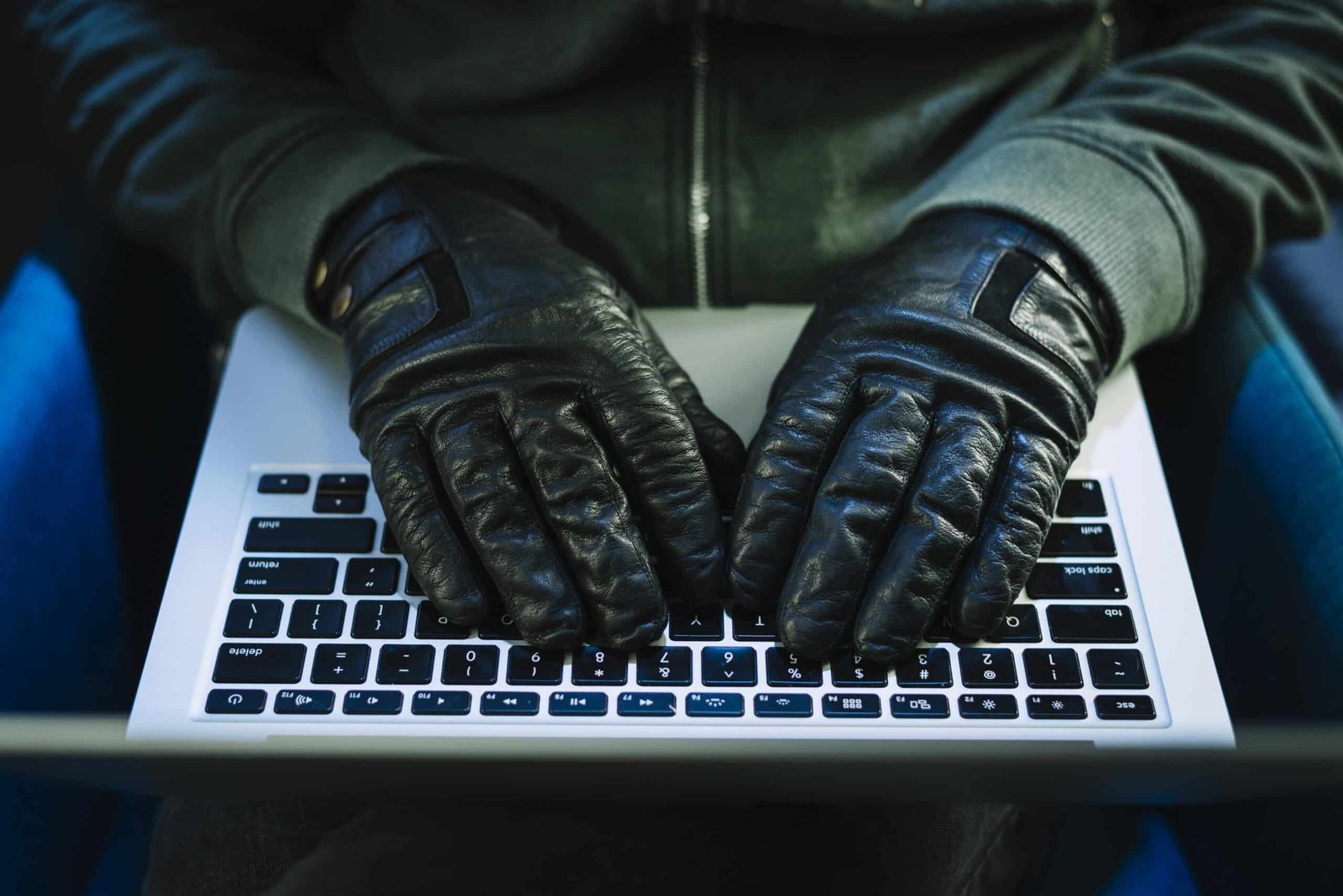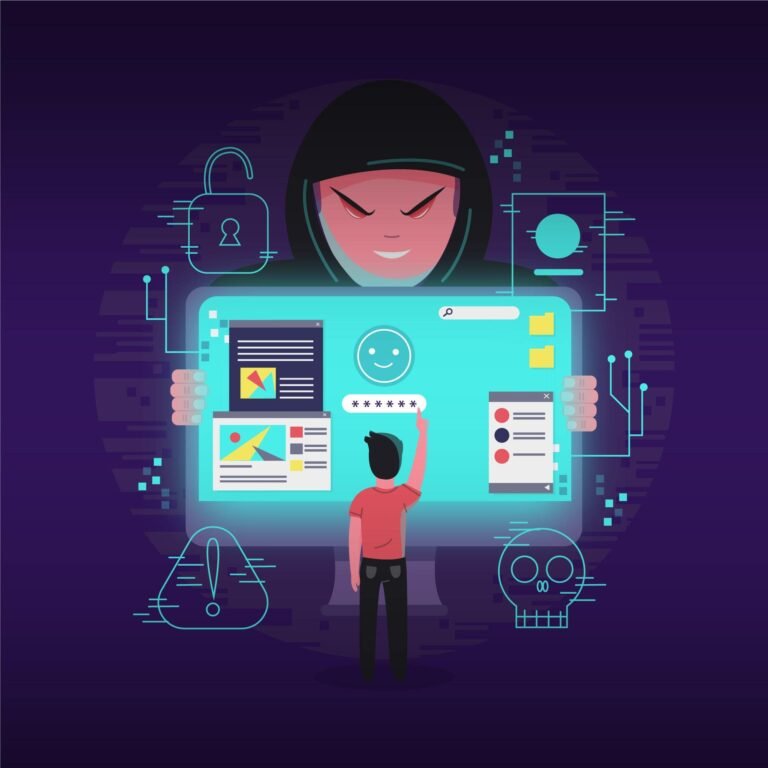How to Prevent Insider Threats?
In the tricky world of keeping our online stuff secure, dealing with insider threats is one of the Difficult parts. These threats don’t come from the mysterious attackers hiding on the internet. They’re right among us, maybe even the folks we see daily at work. Crazy, right? It’s like discovering a sneaky wolf pretending to be a sheep, hanging out with the rest of the sheep. That’s why it’s super important for companies to stay alert and keep their guard up.
So, how do we tackle this tricky issue? We need to start by building a strong security system where everyone is careful but trusts each other. This means making a place where keeping things secure is part of everyone’s daily routine, from the big bosses to the new interns. It’s not just about stopping strangers from causing trouble, but also making sure our team follows the rules. Let’s break this down and solve it step by step, shall we?
What are Insider Threats?
At the core, insider threats are like having a spy on your team. These aren’t your usual hackers from the outside; they are people within the company who, on purpose or by mistake, cause damage from the inside. Imagine an employee who knows secret stuff decides to share it without asking, or maybe someone accidentally does something that leaves the company’s online doors unlocked. It’s a tough spot, like walking on a tightrope without any security net.
These threats can look different – like an unhappy employee wanting payback, or a team member who accidentally clicks on a bad email link, causing a mess. What makes it hard is that they’re part of the team, so they blend in. Spotting them means really paying attention and acting fast. Getting the hang of insider threats is key to making sure the company’s defenses are solid, keeping it secure from trouble that comes from the inside.
Impact of Insider Attacks
When insider threats turn into real attacks, the impact can be huge. It’s not just a small problem; we’re talking about big trouble that can shake up a company from top to bottom. Imagine waking up to find out that your company’s most secret information is all over the internet, or that your customers’ private details have fallen into the wrong hands. It’s like a bad dream.
The money lost can be huge, sometimes reaching millions or even billions, depending on how bad the security breach is. But it’s not all about the money; the hit to the company’s reputation can be even worse. Once trust is broken, it’s like a vase that’s cracked. You might be able to stick it back together, but you’ll always see those lines, reminding you of what happened.
Also, the mess that happens inside the company after an attack can mess up how things run, make workers feel down, and create a really bad vibe at work. The problems that come after an insider attack are complex and touch every part of a company. That’s why it’s super important to stop these threats early before they turn into big disasters.
Preventing Insider Attacks is Getting More Difficult
You might think that with all our advanced gadgets and cybersecurity tricks, stopping insider threats should be easy. But here’s the surprise: it’s getting harder every day. In our world today, where information flies around super fast, it’s become a huge challenge to keep the bad stuff out and the good stuff in.
First off, the amount of information that companies deal with every day is overwhelming. It’s like trying to keep an eye on every single grain of sand on a beach – really, really tough. Then, throw in the fact that lots of people work from home now and use their gadgets for work, and you’ve got a perfect storm for security problems that can make your head spin.
But hold on, there’s even more to it! Now the lines between our private and work online lives are getting fuzzy, which makes it even harder to keep an eye on things without invading someone’s privacy. It’s a tight balancing act, trying to protect important info while also respecting people’s rights.
In this changing world, the old ways of doing things just aren’t enough anymore. To stay ahead in this high-tech game of hide and seek, you need to be quick, creative, and always alert to how online security is changing. It’s a big challenge, but then again, no one ever said that keeping our online world secure was going to be simple, did they?
How to Detect Signs of Insider Threat to Your Privileged Accounts?
Watching over your special accounts is super important, like keeping a close watch on treasure. These accounts are like magic keys that can open up the most important parts of your company’s online world. So, to catch any sneaky insider threats, you need to be smart and alert.
The first thing to look out for is anything odd, like a big red warning sign. It could be someone using the system at strange times, like someone up to something in the middle of the night. Or maybe there’s a sudden big increase in how much data someone is looking at or taking, kind of like someone quickly filling their pockets before they run off.
Next, keep an eye on any team members who seem unhappy. Unhappy workers can become big problems, as their bad feelings might turn into harmful actions. It’s not only about watching what they do online; it’s also about understanding how they feel.
Another clear warning is when someone tries to go where they shouldn’t. Picture someone with a basic pass trying to get into a special area – it’s going to get noticed. Doing regular checks and reviewing who can access what can help spot these issues early, stopping bigger problems before they start.
In this tricky online balancing act, the trick is to mix the latest technology with some classic gut feeling. By putting together a mix of security steps, you can catch the early warnings before they turn into a big problem for your special accounts. It’s all about staying one step ahead, not just fixing things after they go wrong, in the big strategy game of keeping things secure online.
Who is More Likely to Be (or Become) an Insider Threat?
In the tricky area of insider threats, it’s not always the people you’d expect who might cause problems. Anyone in the office could become a threat. However, some types of people might be more likely to cause trouble.
First, attention often goes to those who are unhappy or upset. Maybe they missed out on a promotion too many times, or they don’t feel like part of the team. This kind of unhappiness can lead to big problems with insider threats.
Then, there are the people who have way too much access, like having a whole bunch of keys when they only need a few. Giving someone all the keys, not just the ones they need, can be risky. Even the most loyal employees might be tempted if the situation is just right (or rather, just wrong).
And don’t forget about the quiet and sneaky ones, the people who don’t stand out because they might be getting ready to leave or they’re holding onto a grudge. These folks could be secretly gathering information, waiting for the perfect time to make their move.
And we can’t leave out the contractors and outside companies that help us out. They’re like visitors in your online house, and although most are just there to help with specific jobs, there might be a few who are looking at things they shouldn’t.
In the end, the chance of someone becoming a threat from the inside can pop up where you least expect it. It’s all about understanding people, how the company works, and the temptation that comes with being able to get to certain information. Being watchful and creating a friendly, open place to work is important in reducing these dangers.
You Can Reduce the Potential for Insider Threats Before They Occur
Stopping insider threats before they grow isn’t just a dream; it’s really possible if you plan, have a good strategy, and take action early. It’s like pulling out weeds in your garden before they spread, so your garden stays healthy and bright.
The first step is teaching and making everyone aware. Make sure your team knows all about keeping data secure. It’s like showing everyone how to spot a weed, so taking care of the garden becomes a team effort.
Next is the “least privilege” rule, which means, “Don’t give everyone the key to every door.” Make sure people only get access to what they need for their work, keeping the most important stuff extra secure and only with those who need it.
Having regular checks and reviews is like doing a health check for your garden. They help you find anything odd or problems early on, making sure everything is how it’s supposed to be. When you also watch how users behave, you can catch weird things early, like spotting a cactus popping up where you expected roses.
Creating a workplace where everyone feels included and open is like taking good care of your garden with kindness and respect. When people feel important and listened to, they’re less likely to become the problems that can hurt the workplace.
By mixing all these approaches, you build a strong shield against insider threats, turning them into something uncommon instead of something that’s bound to happen. It’s all about creating a tough, alert, and active group of people who protect the online world, making sure it stays secure and peaceful.
What to Do if an Insider Attack Occurs?

Even with great planning, sometimes things go wrong and an insider attack happens. It’s like a sudden storm wrecking your well-cared-for garden; it’s unexpected and can cause a lot of damage. But don’t worry, there’s a way to get through the storm and fix things.
The most important thing for you is to stay calm. It’s essential to act quickly but without panicking, like a skilled captain navigating rough seas. Put your emergency plan into action right away. This plan is your go-to guide for these situations, packed with all the steps and tools you need to handle the problem.
The next step is to contain the problem. Keep the trouble isolated so it doesn’t spread, kind of like blocking off a part of your garden to stop bugs from getting everywhere. You might need to stop certain people from getting in, turn off some parts of your system, or do other big things to keep the damage small.
After that, it’s time to dig into what happened and why. It’s like being a detective, putting all the pieces of the puzzle together to figure out how big the problem is and what caused it. This understanding is super valuable because it helps stop the same thing from happening again.
Talking openly and clearly with everyone involved is also really important. Give updates that are easy to understand. Being honest and open helps keep trust strong, even when things are tough.
Finally, after the trouble is over, it’s time to fix things up and learn from what happened. Look over your rules, make your protection stronger, and maybe the most important thing, come together and heal as a team. It’s a chance to grow, making a tough situation into something that makes your team stronger.
After an insider attack, being tough, acting fast, and having a positive plan can make a difference, helping your team come out stronger and smarter than before.
5 Types of Insider Threats
In the tricky world of insider threats, there’s no single solution that works for everything. These threats vary a lot, each bringing its own set of problems. Knowing the different types can make it easier to come up with the right defense plans, kind of like knowing exactly what kind of weeds you’re dealing with in your garden.
- The Malicious Insider: Think of this one as the attackers in our story, out to hurt the company on purpose. They could be after revenge, money, or something else not so nice. Imagine someone on purpose sharing secret information or messing up the systems, like a hidden enemy.
- The Careless Worker: This person doesn’t mean to cause trouble, but they do because they’re not careful. It’s like accidentally leaving the garden gate open for pests to come in. Whether it’s getting tricked by fake emails or losing devices with important data, their mistakes, even though they don’t mean them, can cause big problems.
- The Compromised User: This person’s login details have been stolen by attackers outside, making them an unknowing tool for trouble. Their identity gets used for bad stuff, which makes this threat hard to spot.
- The Third-Party Vendor: These are the external companies that have access to your stuff, and they can become weak spots if they’re not careful with their security. It’s like giving your house keys to someone who’s not good at locking their doors.
- The Insider Collusion: This is when someone from inside the company joins forces with bad guys from outside. This mix of inside access and outside bad intentions creates a really serious risk, bringing together the worst of both sides.
Spotting these different types out there is key to making defenses that are just as detailed and strong as the threats. It’s like having the perfect tool for each kind of weed, making sure your garden stays clean and secure.
Unpacking Real-World Insider Threat Case Studies
Looking into real-life examples of insider threats is like peeling an onion; with every layer, you find out more about how these threats happen and the effects they cause. These stories are not just warnings but also important lessons on how to protect against these issues.
- The Disgruntled Employee: Think of a worker who finds out they’re about to lose their job and decides to make a big exit. They take lots of secret company data, planning to sell it to whoever pays the most. This revenge move not only breaks trust but also puts the company’s special advantages in danger.
- The Accidental Leak: Imagine a good-hearted worker who, while hurrying to finish their work, sends a file with secret data to the wrong person. It’s a simple slip-up, but the consequences are serious, leading to important data getting out there.
- The Compromised Account: Here, an attacker tricks an employee into giving away their login details. Without the employee knowing, their identity is used to get into the company’s data, showing how dangerous hacked accounts can be.
- The Vendor Vulnerability: Imagine a company you work with that doesn’t take good care of its security. attackers find a way in through this company, getting into your company’s systems too. This not only reveals secret data but also makes you wonder if you picked the right companies to work with.
These real-life examples show that insider threats can come in many forms and highlight how important it is to have a strong, layered plan for security. They remind us that the human side of keeping things secure online is just as important as the technology side. To lower the risks, we need to be watchful, teach people well, and build a workplace where everyone takes security seriously.
In conclusion
In the complex world of keeping things secure online, insider threats are a big problem that creates tricky risks we need to keep an eye on. As we’ve looked into how to stop, spot, and deal with these threats, it’s clear that using smart technology, understanding people well, and having a strong focus on security from the start is key to protecting ourselves. The real stories we’ve looked at show just how much damage these threats can do, reminding us that we need to tackle this issue from all sides. At the end of the day, protecting against insider threats isn’t just about building strong digital defenses, but also about making security a natural part of how a company works. In this constant effort to stay secure online, knowing what’s going on, being alert, and being able to change our approach are our best tools, helping us stay ahead in the ongoing challenge of cybersecurity.








Wow amazing blog layout How long have you been blogging for you made blogging look easy The overall look of your web site is magnificent as well as the content